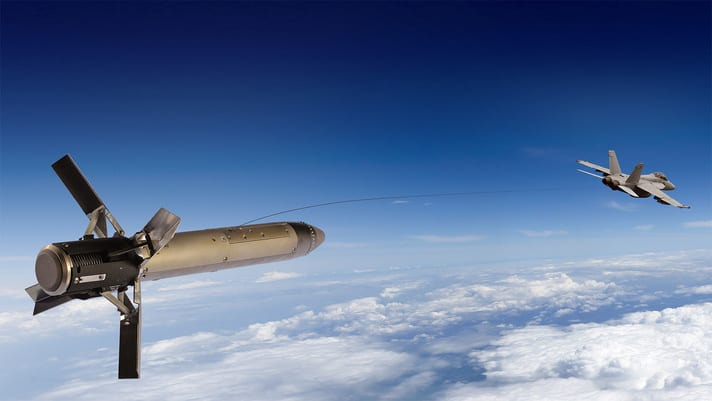
ARLINGTON, Va. — BAE Systems will be demonstrating for the U.S. Navy this spring a podded radio frequency countermeasures (RFCM) self-protection system on the service’s P-8A Poseidon maritime patrol reconnaissance aircraft, the company said.
BAE Systems has received a $4 million contract from the Navy to conduct a quick-turnaround demonstration of a new RFCM system for the P-8A, the company said in a Jan. 5 release.
The RFCM is designed to jam or decoy missiles guided by RF energy, including radar-guided surface-to-air missiles and some air-to-air missiles. A maritime patrol reconnaissance aircraft is more likely to face these threats while operating against a near-peer competitor than in the more benign environment of the past three decades.
“The P-8 is now considered a high-value asset with these emerging threats from hostile countries,” said Donald Davidson, director of the Advanced Compact Electronic Warfare Solutions product line at BAE Systems, in a Jan. 5 interview with Seapower. “The Navy was interested in an ability to rapidly prototype and demonstrate an RF counter-measures system for the platform.”
Davidson said the Navy desired a system housed in a pod similar in its outer mold lines to a Harpoon missile that could be mounted on the aircraft’s existing wing stations.
The lightweight, high-power RFCM system pod will include some components that have been proven in the ALQ-214 electronic countermeasures system installed on the F/A-18E/F Super Hornet strike fighter, including a high-powered electronics frequency converter, a launch controller, and expendable ALE-55 fiber-optic towed decoys. The RFCM pod for the P-8A will include a component called the MDX, a small form factor jammer which is about half the size of a loaf of bread and integrated with the decoy, Davidson said.
The RFCM system will be demonstrated in the spring of 2021, Davidson said, “and if the demonstration proved effective, then [the Navy] would look to move to a more formal EMD [Engineering and Manufacturing Development]/production program to get it fielded as soon as possible.”
He said that a successful demonstration would “lead to opportunities for additional funding” as the Navy develops its program budget in the 2022-2023 time frame.
“The ability to meet this unprecedented response time underscores our agility, focus on meeting customer needs, and our ultimate goal of protecting our warfighters,” Davidson said in the BAE release. “A process that used to take 18 to 24 months has been scaled to five or six months, which is remarkable, as is deploying this new self-protection capability.
BAE Systems said the “rapid response is the result of collaboration among small focus teams who developed an innovative approach to the design and fabrication of the system’s mechanical parts. As a result, BAE Systems will design, build, integrate, and ship the RFCM system in approximately five months, followed by two months of flight testing on the P-8A Poseidon platform.”
Work on the RFCM contract will be performed at the company’s state-of-the-art facility in Nashua, New Hampshire, the release said.
- Insitu Going Strong at 30, Focusing on Maritime Operations - April 8, 2024
- Navy Awards Boeing Additional Funds for MQ-25 Drones for Testing - April 3, 2024
- Benign 4th Fleet AOR Useful for Unmanned Vehicle Operationalization, Admiral Says - March 27, 2024






